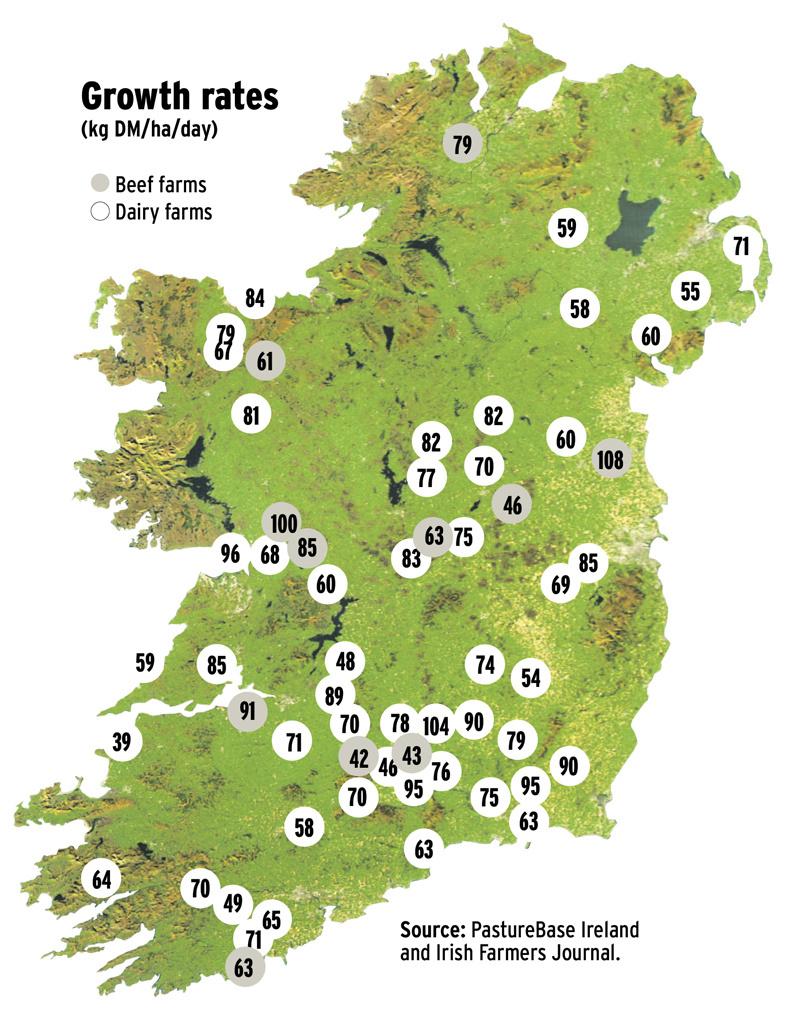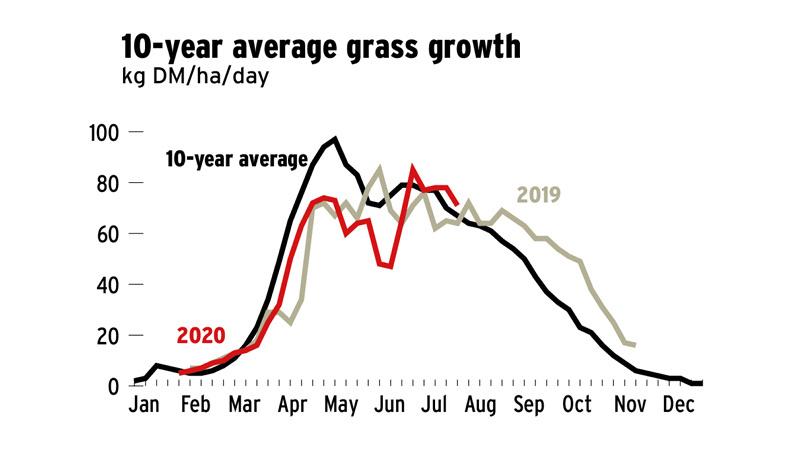Grass growth is exceeding demand on farms. It is important to manage quality now and remove any surpluses early as grass growth will start to decline as we enter August.
The average pre-grazing yield (PGY) around the country at the moment is 1,600kg DM/ha, which is too high.

Grazing covers above 1,400kg/ha reduces utilisation, leaving higher residuals and subsequently poorer-quality grass in the next rotation.
This is especially seen at this stage of year with dung pads leading to tufts of grass present in fields. Where there is a high percentage of these you need to be grazing the paddock at a PGY of closer to 1,200kg/ha. So over the next week, keep cover/LU at 180kg/ha or 12 days grass ahead for beef farmers.

Remove any grass in surplus of that, even if the grass cover is as low as 1,500kg/ha. Choose paddocks with poorer-quality grass.
This will put you in a good position with grass quality for the next two weeks while having grass coming back on fields cut to build covers mid-August.
Fertiliser
There are only two rounds of nitrogen (N) application left and it’s important to target these to get the most out of them.
The last N fertiliser application should be targeted at the end of August ideally or the first week of September. Once you enter September, the response from N spread dramatically drops.
That leaves one application between now and the end of August, target keeping close to a unit per day out before planned final application. Note, clover strong swards will need a lower rate.
It’s a good time to target building low K index soils and replacing any K offtakes from surplus bales or silage.
Knockanore, Co Waterford
I walked the farm and it has a cover/LU of 230kg. A number of paddocks were taken out of the wedge for surplus bales to bring the cover to 194kg. These paddocks will be cut next week. Covers were slightly higher than 1,500kg/ha. It was important to take them out to keep pre-grazing yields at 1,400kg/ha. Growth has slowed with over 17% of the platform being cut for surplus silage in the last 10 days. We are following the cows with a half bag/ac of 38-0-0 CAN with sulphur and anything that was cut for silage is getting a bag and half/ac of 18-6-12. Final application of nitrogen will go out early September 30units/ac of N.
Teagasc Ballyhaise, Co Monaghan
There is 20% of the farm out for silage that will be cut as soon as possible. We plan to have the whole farm open for grazing in the next 10 days. This will reduce our stocking rate going into August, leaving us in a good position to build grass for the autumn without excess feed. AI finishes here on Friday 31 July, which will complete 12 weeks breeding. Activity has been very quiet. Vasectomised bulls work well although they can be a nuisance around the place. Ground conditions are wet on marginal ground here after a lot of rain over the last week.
Horse & Jockey, Co Tipperary
A grass walk showed growth was high so I removed a few paddocks to take advantage of high growth. We have all the winter silage feed requirement in the yard. All silage made from now on will help build a reserve. A number of fields were top-dressed with clover after a tight grazing, which should help boost milk solids and grass production. Breeding is finished after 10 weeks of AI and the bull was in for two weeks. Conception rates look good. We hope to have our cow numbers for next year from the cows and heifers served in the first 10 weeks and sell the late calvers.






 This is a subscriber-only article
This is a subscriber-only article










SHARING OPTIONS: